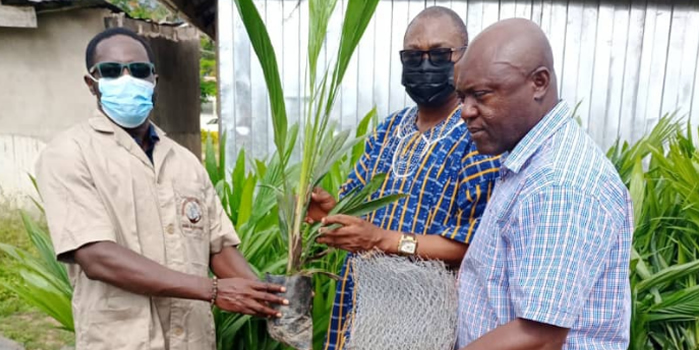

Location and Size
The Bibiani Anhwiaso Bekwai Municipal is one of the nine (9) Metropolitan, Municipal and District Assemblies in the Western North Region. The Municipality is located between latitude 6° N, 3° N and longitude 2° W, 3° W. The Municipality is bounded on the north by the Atwima Mponua District in the Ashanti Region, south by the Wassa Amenfi West District in the Western Region, west by the Sefwi Wiawso Municipal Assembly in the Western Region and east by the Upper Denkyira West District and Amansie West District in the Central Region and Ashanti region respectively.
The Municipality covers a total land area of 873 km square and had a population of 123,272 in 2010 and with a growth rate of 1.8% per annum, the projected population for 2018 is 142,365.
Climate
The Municipality is located in the equatorial climate with the annual rainfall average between 1200mm and 1500mm.The pattern is bimodal, falling between March - August and September- October. The dry season is noticeable between November - January. The peak periods for rainfall in the Municipality are June and October. The average temperature throughout the year is about 26°c.There is a high relative humidity averaging between 75% in the afternoon and 95% in the night and early morning.
The implication of the climate of the Municipality is that it is suitable for the growing of various crops particularly both cash and food crops. This is the reason why the Municipality is one of the leading producers of the cash crop like cocoa in Ghana.
Vegetation
The Municipality’s vegetation is of the moist semi-deciduous (equatorial rain forest) type. The BAB Municipal has a forest district which has a gross area of 961.52 sq.km of which 365.30sq.km constitute Forest Reserves. The forest vegetation is made up of many different tree species including wawa (Triplochiton selerexylon), mahogany (Khaya invorensis), esa (Celtis), ofram (Terminalia superba), edinam (Entandro phragma ivorensio), onyina (Ceiba petandra), kyenkyen (Antiaris Africana) and odum (Milicia exelsa), Sapele etc. Hence, the Municipality is a suitable location for the establishment of timber firms.
There are eight forest reserves under the Municipality out of which 7 are located within the boundaries of the Municipality. The seven forest reserves have a total area of about 286.17 sq.km as indicated in Table 1.8. The forest reserves serve as tourist attractions and influence the rainfall pattern in the Municipality.
Relief and Drainage
The Municipality forms part of the country’s dissected plateau. The lowest and the highest points in the Municipality are 350m and 660m above sea levels respectively. This highest point is also the highest in the Region at Attanyamekrom (Adiembra), near Sefwi Bekwai. A gently rolling landscape is found over lower Birimian rocks. Over the Tarkwaian rocks, the topography is rugged and hilly rather than smooth and flat or gently undulating.
Geology and Minerals
The geology for the district is dominated by the Precambrian Metamorphic rocks of the Birrimian and Tarkwain formation which contains the mineral bearing rocks. There are also granite rocks and deposit of minerals such as gold and bauxite. The Oxysols soils are rich in mineral deposits making mining the most important and lucrative economic activity in the Municipality. The companies dealing in mining include; Mensin Gold Limited at Bibiani; Chirano Gold Limited at Chirano and Bossai Minerals Limited at Awaso. The presence of mineral deposits in the Municipality has the potential to generate royalties as revenue to the Municipal Assembly for development as well as create employment for the inhabitants. It also implies that there is going to be influx of people to the Municipality by the operations of the mining and social implications.
Soil
The Municipality is endowed with rich forest ochrosols and oxysols which support the cultivation of a wide variety of crops including cocoa, coffee, oil palm, plantain, cocoyam and cassava, etc. and other vegetables. It also makes the Municipality to have a comparative advantage in agriculture and agro-processing.
Date Created : 11/28/2017 6:34:52 AM













 facebook
facebook
 twitter
twitter
 Youtube
Youtube
 +233 593 831 280
+233 593 831 280 0800 430 430
0800 430 430 GPS: GE-231-4383
GPS: GE-231-4383 info@ghanadistricts.com
info@ghanadistricts.com Box GP1044, Accra, Ghana
Box GP1044, Accra, Ghana